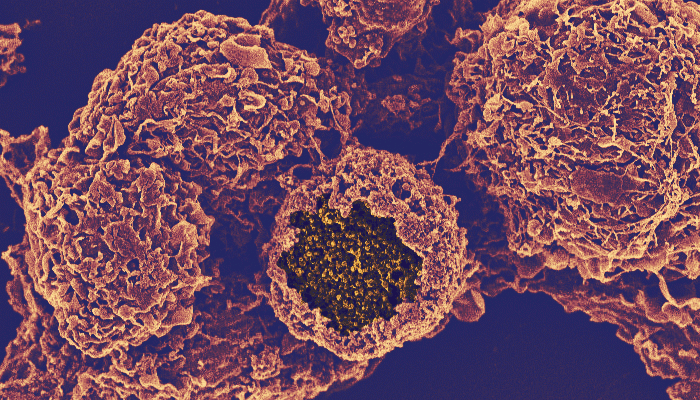PhD Student in Kizhakkedathu lab, CBR
Scientists at the Centre for Blood Research have contributed to the development of a new model for studying host-pathogen interactions in Chlamydia.
With over one hundred million new cases each year, Chlamydia trachomatis is a leading cause of bacterial sexually transmitted diseases (STDs) worldwide. Currently, the bacterial infection is often well managed by a standard course of antibiotics but resistance is increasing and many infections go untreated. If improperly treated however, the spread of the bacteria initiates the progression of much more severe ailments including infertility, blindness and even chlamydia-induced reactive arthritis.
Many of the co-morbidities in chlamydia are due to the bacterial strains’ preferential infection of macrophages, a type of immune cell that serves as the first line of defence in the adaptive immune response. Once infected, the macrophages have a limited ability to defend against the bacteria, further exacerbating the infections’ progression. In addition, chlamydial persistence in macrophages can also contribute to chronic inflammation and delays in the efficacy of antibiotic treatment.
In an effort to understand how hlamydia is able to infiltrate the immune system so effectively, researchers in England’s Wellcome Trust Sanger Institute reached out to the CBR’s own Dr. Robert Hancock, a world leader in infectious diseases. Together, they developed an innovative and robust in vitro model published in the most recent issue of Nature Communications.
In this study, the scientists generated macrophages from human induced pluripotent stem cells (iPSCm’s), which behaved similarly to macrophages present in human blood. Implementing Crispr/Cas9 technology, (you can read about the future of Crispr/Cas9 here) knock- out cell lines were generated to study the pathways associated with Chlamydia infection. Two genes from the immune system, IRF5 and IL-10RA were identified as key players in fighting a chlamydial infection. The genes are expected to be used in the development of new drug targets for the sexually transmitted disease.
While the pathological findings of the study will indeed be beneficial to antibiotic development, it is the innovative approach used in creating the in vitro model that must be highlighted. Primary macrophages are notoriously difficult to genetically manipulate in an efficient and reproducible manner. Integrating stem cell therapy and Crispr/Cas9 technology has provided an elegant solution for this long-standing experimental headache. This model will undoubtedly attenuate the number of failed experiments and sleepless nights for future graduate students and PDFs tasked with macrophage manipulation.
As for the future of studying host-pathogen interactions in Chlamydia, Dr Robert Hancock states that with Crispr/Cas9 technology “ [We] can now easily see genes that weren’t previously thought to be involved in fighting the infection.” The researchers plan to further probe the mechanisms experimentally using the subject in vitro model.
Media coverage:




